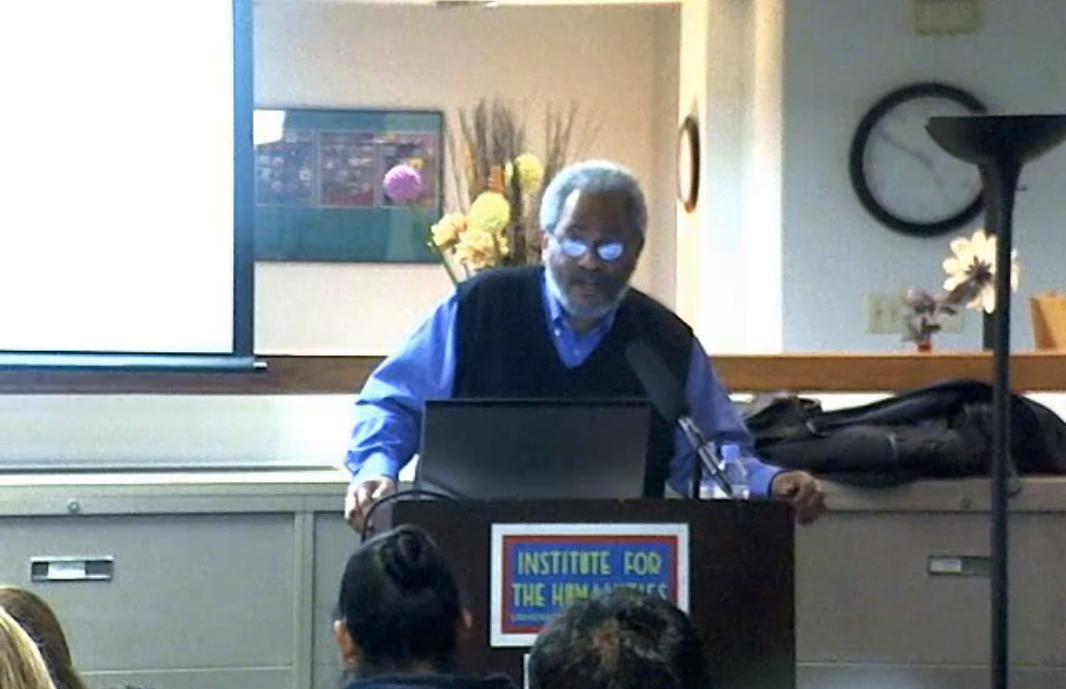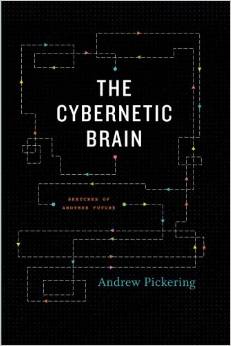a review by Reshmi Mukherjee
~
Connor McCarthy presents a crisp and detailed overview of Edward W. Said’s life, scholarship, interdisciplinary training, and critical thought processes, for the novice readers of his works. Additionally, the use of simple language and lucid sentence construction has the potential to attract audiences from non-literary backgrounds as well. These readers may be interested in knowing what Michael Sprinker called “the very ideal of the cosmopolitan intellectual that remains so central to the humanities’ self-image to this day.”1 Therefore this book is unlike most critical enquiry of Said’s works in that it caters to readers across disciplinary boundaries.
The content of the book is not new but the form, narrative technique, is Saidian in nature. McCarthy, an ardent critic of Said, analyzes his written works in relation to “the events and circumstances entailed by and expressed in it.”2 Illustrating the relationship of a critic to the text, as explained in Said’s The World, the Text, and the Critic, McCarthy reads Said’s literary, political, and critical works as one continuous narrative, and in relation to the key terms of filiation and affiliation. By filiation, Said means the writer’s natural and organic connection by “inherited location.” And affiliation is a “network of relationships that human beings make consciously […] often to replace the loss of filiative relations in modern society.”3 A writer’s work, the text, therefore is a conglomeration of both filiative and affiliative connections hence, a “worldly” phenomenon. Accordingly, McCarthy situates Said’s identity as a scholar and humanist as intrinsically connected to his socio-political and cultural reality.
The book is divided into four chapters: 1) Introduction, life, work, 2) Influences, 3) Works, and 4) Reception. The introduction covers the itinerary of Said’s life including the obsequies paid after his death on 25th September 2003. In so doing McCarthy gives an insight to the complex historical, and filial conjuncture that shaped Said’s persona including his anxiety of being exiled and nation-less, a sentiment that is echoed in his literary works, critical thinking, and political engagement with the Palestinian cause. Alongside, this section pays special attention to Said’s childhood and adolescence as oscillating between different emotional conditions. Said was vexed with contrasting but demanding parents, a constant need to please them, displacement and relocation from Jerusalem to Cairo and then to the United States, and negotiating the paradoxical meaning of his name, which he called “foolishly English.” Parts of this section reiterate Said’s memoir Out of Place but all the information is relevant for readers to understand Said’s “innate sense of a divided but reflexive self.4
The second chapter explains the polarized opinions about Said’s academic work. In so doing, McCarthy helps the readers understand Said’s works and his thinking processes. Reviewing the sheer volume and depth of Said’s scholarship, detailing the different schools of thought like Romance philology, Marxism, phenomenology, structuralism, poststructuralism, musicology etc. that influenced him, McCarthy notes that Said did not accept all arguments unconditionally. While Said was influenced by these discourses, he questioned their methodology and application in the real world, while resisting any easy disciplinary categorization of his works. In particular, McCarthy’s reading focuses on Said’s complex relationships with Western Marxist tradition and post-structuralism. While Said was critical of Marxism’s rigid adherence to putatively radical theoretical position and inverse conservatism, he drew inspiration from Marxists George Lukacs, Theodre Adorno, and Antonio Gramsci. Their concepts of “methodological trap,” “absolute resistance to reification and the alienation of consciousness under industrial capitalism,” and “hegemony” continued to inspire his work till the very end.5 His relationship with Adorno, especially towards the end of his life, became more of an aesthetic experience, while Gramsci continued to influence his theoretical acumen. This section in the book is theoretically appealing as it epitomizes one of the basic arguments in Orientalism. It explains Said’s idea of the cultural creation of hegemony via Gramsci’s sense of materiality of culture and ideas. For example, Said in Orientalism notes, “It is hegemony, or rather the result of cultural hegemony at work, that gives Orientalism… [its] durability and strength.”6 By “work” Said here refers to the political elite society, in the Gramscian sense of the term, which retains power by manipulating public opinion. McCarthy further exemplifies that Said was also enthused by Gramsci’s notion of the organic intellectual whose job it is to forge hegemony. Consequently, Said believed in his position as an organic/public intellectual and enabler of how new socio-political movements intervene in the public sphere.
Like Gramsci, French poststructuralist Michel Foucault also influenced Said’s works. In fact Said was one of the “major mediators of Foucault’s thought into the American academy.”7 In Orientalism, Said explains the discursive use of power that shaped knowledge about the non-west, through Foucault’s theory of power and knowledge. Said defines knowledge as part of an underlying master-code or structure, and man is constituted via these discursive practices. However, in his later works, Said challenged Foucault’s notion of power in his 1984 commemorative essay on Foucault’s death “Michel Foucault,” and McCarthy focuses on that aspect in the third chapter.
The second half of this chapter highlights two aspects of Said’s personality, those being his “dialectical and paradoxical” relationship with Joseph Conrad, and admiration and empathy for Erich Auerbach. His fascination for Conrad is so strong that he does not emphasize Conrad’s relationship with the empire; rather, he is interested in Conrad, the exiled intellectual and writer, whose life was full of unresolved tensions. The reason being, Conrad’s personal experience of exile, complex life choices, and lingering sense of alienation, echoed some of the problems that Said encountered as a writer. Said admired Auerbach for similar reasons and for writing Mimesis at the time of his exile from Europe. Auerbach’s exile, alienation, and loneliness coupled with his “profound knowledge” left a permanent impression on him. It is from Auerbach’s experience that Said negotiated his own pain of being in exile as a necessary process that enables critical thinking.
The third chapter discusses Said’s select works in detail. It gives a fresh insight into pedagogical and methodological aspects of writing a text. McCarthy carefully unfolds Said’s theorization of text, critic, writer, discourse, power, knowledge, hegemony, as critical categories for analysis. In Beginnings, McCarthy explains, Said paid particular attention to the text, writer, and intellectual’s role in the public domain. Accordingly, the intentional production of meaning in the beginning of a text is argued as the most important function of a text. At this juncture in the text, to ratify Said’s position, McCarthy reiterates his life long commitment about connecting the writing of a text, a performative action, to its reality, and the intellectual’s role as a public persona.
In discussing Orientalism McCarthy elaborates Said’s analysis of western representation of the non-west via a hierarchical power structure that led to knowledge production about the other. However, the most essential aspect of McCarthy’s analysis here is his emphasis on Orientalism, not as a text on the Middle East but, as a discursive practice that, even if Said refused such compartmentalization while assessing the relevance of this book, changed the direction of postcolonial studies. The Question of Palestine is examined in continuation with Orientalism while the meaning of “Zionism from the Standpoint of its Victims” is discussed in great depth. McCarthy sheds light on the fact that Said is writing back to offer “an analysis of Zionism from a position” that was long silenced in accounts of “Whig history.” 8 This chapter explains the socio-political, historical, and economic reasons that led to the formation of Israel and explains Said’s statement “benefits for Jews and none for non-Jews in Palestine.” Despite Said’s scathing critique of Zionism, McCarthy directs the readers’ attention to the fact that The Question of Palestine does not delegitimize the Jews historical claim to Palestine. Rather, Said is opposed to the conditions for the fulfillment of this claim i.e. the dispossession of the Palestinian people. Therefore, he writes to remind the Zionists that their claim is intertwined with Palestinians and Palestinian history. McCarthy’s particular emphasis on this section from the book is relevant because it positions Said as an academic intellectual and human rights activist connecting the events with historical data, and not a “professor of terror” (as he was accused by Commentary magazine journalist Edward Alexander). The discussion on The World, the Text, and the Critic ends with Said’s criticism of Foucault’s theorization of power and discourse. In this segment, McCarthy mentions Said’s criticism of Foucault’s passive onto-phenomenological (how and why) questions about power, his ethnocentrism, and inability to explain why “the abrupt change [in power] occurs between one episteme and the next.”9
The book’s final chapter notes the reception of Said’s text, Orientalism, among the Anglo-American academic scholars of postcolonial and culture studies. Even though this section begins with anthropologist James Clifford’s complex reading of Said’s use of “Foucauldian ideas in the service of his humanist, cosmopolitan project,” critical commentaries by doyens in these fields namely Paul Bové, Robert Young, and Aijaz Ahmed are the main focus.10 McCarthy notes both Bové’s and Young’s criticism is geared towards Said’s failure to effectively employ poststructuralist ideas and “carry them to their logical conclusion.”11 Bové’s critique of Orientalism is concerned with Said’s use of Foucault’s theory of power and not extending its use in the production of knowledge system. While he credits Said with a detailed picture of the voluntary and involuntary complicity of orientalism vis-à-vis imperialist power, Bové faults Said for failing to situate power within the “entire economy [where] both Orientalist and Saidian ‘oppositional’ work is produced.”12 In so doing, Bové sides with Foucault who argued against the intellectual’s role in revolutionary change. According to Foucault, institutions discursively shape intellectuals who are “already always hemmed in by and even complicit with power.”13 Said, however, believed in the intellectual’s social role and, while agreeing with Foucault’s theory of power, downplayed its relationship with knowledge that shaped prominent and institutionally powerful intellectuals. Therefore, Bové’s main critique of Orientalism is that, it is critical of power “but not critical enough.”14
Robert Young’s criticism of Orientalism is based on Said’s theory against orientalist discourse and for an “alternative knowledge of the Orient.”15 Young argues, if the success of Orientalism lay in its strict “monopolization of linguistic codes to represent the Orient,” is it possible or desirable to have another form of knowledge system?16 If all knowledge is mitigated via a stringent power structure, will anti-Orientalist discourse not repeat the same mistake it wishes to castigate? By contrast, Marxist economist Aijjaz Ahmad takes a different position in his criticism of Orientalism. He has accused Said of first rethinking of history and second, using poststructuralism as a way to escape Marxist tradition. He compares poststructuralist anti-realism to fascist thinking and concludes that Said represents anti-humanist American scholarship that dominates the world today. It is connected and aids in the smooth functioning of “unprecedented imperialist consolidations of the present decade.”17 Therefore, Said, for Ahmad, is a native informant and Orientalism is a “crucial ideological wedge into [the Anglo-American academy] for Asian immigrant intellectuals.”18 McCarthy however, towards the end of this section, points out Young’s and Ahmad’s purposeful misreading of Orientalism. He reminds the readers about Said’s response to critics such as Young and stresses the fact that Orientalism is about “fragmenting, dissociating, dislocating, and decentering of the experiential terrain covered at present by universalizing historicism.”19 Said never intended it to be a book about the Orient or to construe an alternative history. In response to Ahmad, McCarthy faults Ahmad’s “polemical aggression” for clouding his argument, as McCarthy notes there is no historical evidence or sociological data to identify North American audience and readership of Orientalism.
As mentioned earlier, McCarthy has painstakingly traced Edward Said’s life and intellectual journey. However, the only flaw in this book is the lack of literature on Said’s political engagement as part of the public intellectual’s ethical responsibility. Said’s scholarly contributions and academic position were closely related to his roles as a practicing member of multiple literary, critical, and political constituencies. Indeed, without mentioning this side of Said, his contribution to the world will remain half known. Gayatri Chakraborty Spivak, in an interview, has said that Edward Said was a Kantian Enlightened subject/scholar “who writes for all time and all people.”20 This is true because later in his life, and he has written about it in After the Last Sky, Said became deeply concerned with the Palestinian subaltern. He attempted to “change and form public opinion with well-researched commentary on political moves by involving highest level of political intervention and talented musicians in international collaboration.”21 Especially after the failure of the OSLO peace Said believed in other avenues to harbor a non-violent yet beneficial dialogue between Palestine and Israel. In 1997 he collaborated with Daniel Barenboim, the Israeli musician, and organized a musical concert in West Jerusalem. Said’s use of music to enable peace process between Palestine and Israel is worthy of mention because he believed that he real contribution of artists and philosophers is that they can change minds. Mentioning these aspects of Said’s public intellectual persona would have added to the richness of the book and provided a much wider spectrum of Said’s life.
_____
Reshmi Mukherjee (PhD. University of Illinois) is visiting assistant professor of English and interim-Director of Gender Studies at Boise State University. Her research and teaching interests include transnational feminisms, Anglophone literatures, Anglophone Arab fiction, Literature in translation [especially francophone literature], diasporic and exilic literatures, and subaltern theory. Her most recent publication is titled: “Living in Subalternity: The Becoming of the Subaltern in Bessie Head’s A Woman Alone, A Gesture of Belonging, and When Rain Clouds Gather.” It was published in the Journal of the African Literature Association, (JALA) Vol 7. No. 2, Spring 2014.
_____
Notes:
1. Michael, Sprinker, “Introduction,” in Edward Said: A Critical Reader, edited by Michael Sprinker (Massachusetts:
Blackwell Publisher, 1992), 1. Back to the essay
2. Conor, McCarthy, The Cambridge Introduction to Edward Said (Cambridge: Cambridge University Press), 97. Back to the essay
3. Ibid. 100. Back to the essay
4. Ibid. 9. Back to the essay
5. Ibid. 33, 34, 35. Back to the essay
6. Ibid. 37. Back to the essay
7. Ibid. 48. Back to the essay
8. Ibid. 85, 86. Back to the essay
9. Ibid. 105. Back to the essay
10. Ibid. 126. Back to the essay
11. Ibid. 132. Back to the essay
12. Ibid. Back to the essay
13. Ibid. 129. Back to the essay
14. Ibid. 129. Back to the essay
15. Ibid. 130. Back to the essay
16. Ibid. Back to the essay
17. Ibid. 134. Back to the essay
18. Ibid. 135. Back to the essay
19. Ibid. 137. Back to the essay
20. Ben Conisbee Baer, “Edward Said Remembered on September 11, 2004. A Conversation with Gayatri Spivak,” in Edward Said: A Legacy of Emancipation and Representation, edited by Adel Iskandar and Hakem Rustom (Oakland: University of California Press, 2010), 57. Back to the essay
21. Ibid. Back to the essay









